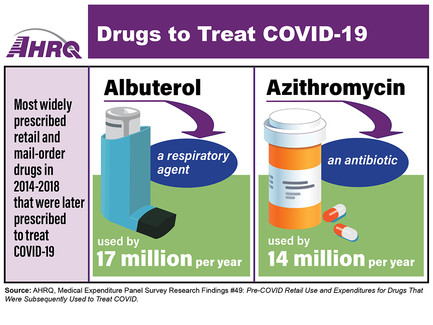| August 24, 2021, Issue #777  Access more data on this topic in the associated research findings, plus additional AHRQ data infographics.  Shadow coaching—the process of using high-performing peers to observe clinicians' performance and provide feedback—was found to improve clinicians' scores significantly on AHRQ's Consumer Assessment of Healthcare Providers and Systems (CAHPS®) overall provider rating and provider communication composite measure. Those gains dissipated over time, however, without reinforcement or follow-up, a new AHRQ-funded study found. AHRQ's CAHPS program advances scientific understanding of patients' experience with valid and reliable patient surveys. In this study, published in the journal Medical Care, researchers reviewed CAHPS survey data in a large urban community health center. They found that coaching improved CAHPS scores of clinicians with "medium" scores, but those gains disappeared after 2.5 years. Researchers suggested that regular "booster" sessions might maintain or increase the improvements. Access the abstract. | Registration is open for a free three-day virtual workshop to learn about AHRQ's Medical Expenditure Panel Survey-Household Component (MEPS-HC) database. MEPS is the nation's most complete source of data on the cost and use of healthcare and health insurance coverage. The Sept. 13-15 workshop will provide an overview of MEPS-HC data, practical information about usage of MEPS public-use data files and an opportunity to construct analytic files with the assistance of AHRQ staff in the hands-on sessions. The workshops support researchers who have an interest in using national health surveys. Contact workshopInfo@ahrq.hhs.gov for additional information. AHRQ's Patient Safety Network (PSNet) highlights journal articles, books and tools related to patient safety. Articles featured this week include: Review additional new publications in PSNet's current issue or access recent cases and commentaries in AHRQ's WebM&M (Morbidity and Mortality Rounds on the Web). Has your organization used an AHRQ tool to improve patient care, make a culture change or save costs? The agency would like to learn more about your use of AHRQ resources to develop Impact Case Studies. Since 2004, the agency has developed more than 475 Impact Case Studies that illustrate AHRQ's contributions to healthcare improvement. Available online and searchable via an interactive map, the Impact Case Studies help to tell the story of how AHRQ-funded research findings, data and tools have made an impact on the lives of millions of American patients. To help us share your impact story, send a short description of how and where AHRQ resources were used, along with your contact information, to ImpactCaseStudies@ahrq.hhs.gov. | AHRQ in the Professional Literature Use of patient complaints to identify diagnosis-related safety concerns: a mixed-method evaluation. Giardina TD, Korukonda S, Shahid U, et al. BMJ Qual Saf. 2021 Feb 17. [Epub ahead of print.] Access the abstract on PubMed®. Transfer boarding delays care more in low-volume rural emergency departments: a cohort study. Mohr NM, Wu C, Ward MJ, et al. J Rural Health. 2021 Feb 28. [Epub ahead of print.] Access the abstract on PubMed®. Digital storytelling: narrating meaning in bereavement. Rolbiecki AJ, Washington K, Bitsicas K, et al. Death Stud. 2021 Mar 18:1-9. Epub 2021 Mar 18. Access the abstract on PubMed®. Harnessing implementation science to optimize harm prevention in critically ill children: a pilot study of bedside nurse CLABSI bundle performance in the pediatric intensive care unit. Woods-Hill CZ, Papili K, Nelson E, et al. Am J Infect Control. 2021 Mar;49(3):345-51. Epub 2020 Aug 18. Access the abstract on PubMed®. The clinical frailty scale and health services use for older adults in the emergency department. Serina P, Lo AX, Kocherginsky M, et al. J Am Geriatr Soc. 2021 Mar;69(3):837-9. Epub 2020 Nov 17. Access the abstract on PubMed®. Patient e-visit use and outcomes for common symptoms in an integrated health care delivery system. Bhargava R, Gayre G, Huang J, et al. JAMA Netw Open. 2021 Mar;4(3):e212174. Access the abstract on PubMed®. Payment incentives and the use of higher-cost drugs: a retrospective cohort analysis of intravenous iron in the Medicare population. Hambley BC, Anderson KE, Shanbhag SP, et al. Am J Manag Care. 2020 Dec;26(12):516-22. Access the abstract on PubMed®. Expert perspectives on intimate partner violence power and control in pediatric healthcare settings. Ragavan MI, Query LA, Bair-Merritt M, et al. Acad Pediatr. 2021 Apr;21(3):548-56. Epub 2020 Feb 22. Access the abstract on PubMed®. Contact Information For comments or questions about AHRQ News Now, contact Bruce Seeman, (301) 427-1998 or Bruce.Seeman@ahrq.hhs.gov. |





No comments:
Post a Comment